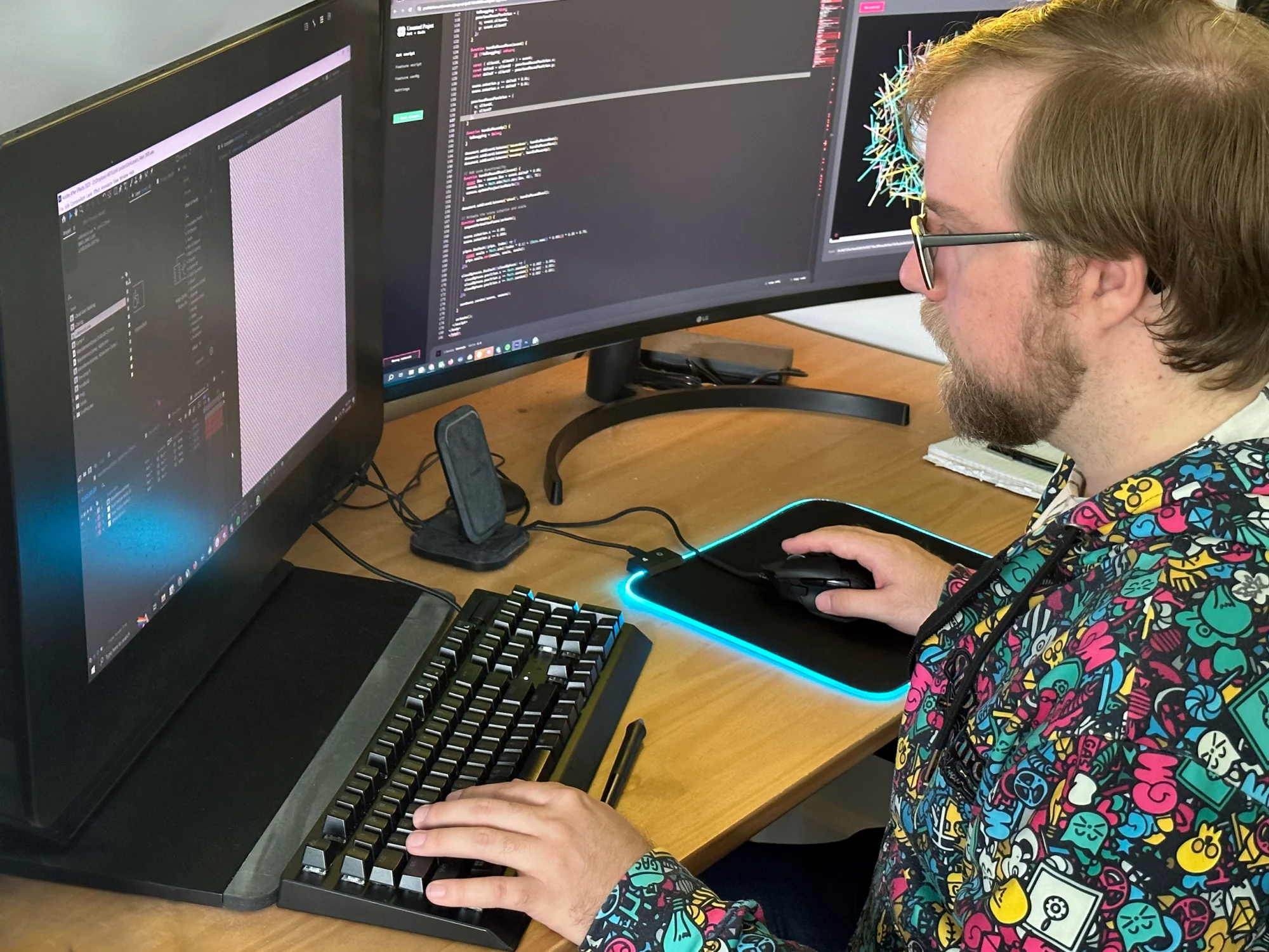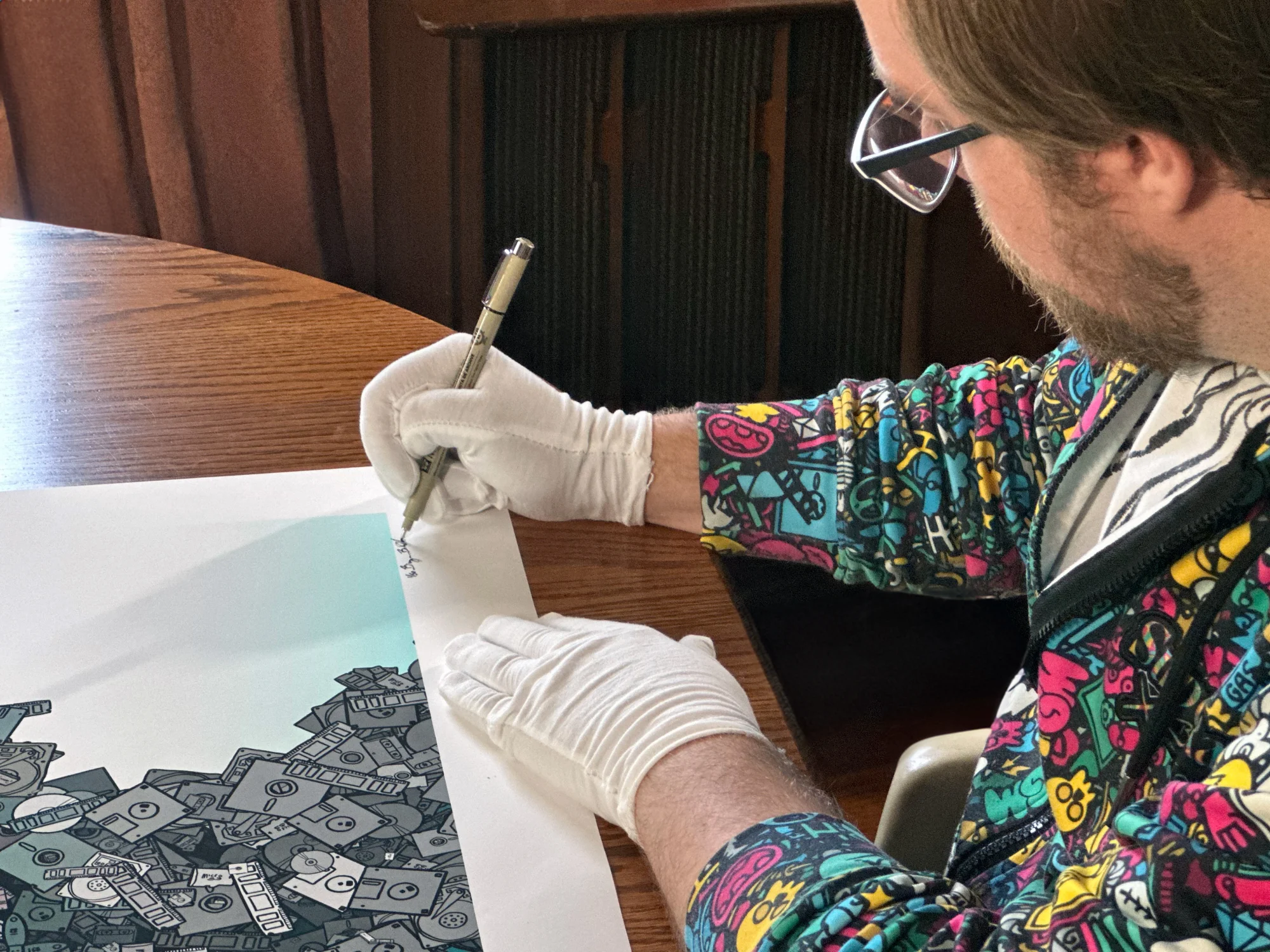The artwork I create has my feelings, thoughts and personality embedded into it. My hope is that when people view the collection, they see me but also start to think about how it reflects their own existence.
Bryan Brinkman’s first solo exhibition and print release with Unit London exists at the intersection of technology and psychology.
Drawing from personal experience, his newest collection of short-form animations questions the ways in which we create, preserve and reflect on memory, and how this has been radically altered by the rise of digital storage and blockchain technologies. One of the works is a phygital release comprising of an NFT animation with 50 unique hand-signed prints, each corresponding to a different frame of the animation.
“This collection embodies a Web3 ethos because the artwork is about technology and the medium is technology. The artwork is talking about its own existence.”
By emphasising the figurative, Brinkman invites us to consider our place within a technologically networked society. How do we understand and orient ourselves in the world through technologies? How do these technologies serve us and what do we do when they fail us? Each piece presents a new question for consideration.
In Memory Loss the ephemerality of memory is juxtaposed with the permanence of technology. As symbols of digital storage entities effervesce in the shape of a facial silhouette, we are reminded that memories can be stored digitally that would otherwise fade with time. What memories should we preserve to remind us of our past? How will these memories shape our future sense of self?
Phygital Release
Memory Loss is accompanied by a unique print. Hand-signed and numbered by the artist, each edition corresponds to a different frame of the animation.
By capturing a fleeting moment from his animation and translating it to physical form, Brinkman blends elements of the tangible with the virtual to explore the slippery space between real and constructed memories.
If our identity is shaped by the memories we store digitally, what happens when we lose that data? Dead Man Walking is a rumination on technological failure. A figure made up of “critical error” messages walks trepidatiously toward us. Or is he moving away? As space and time are viewed through a distorted lens, we are confronted with the danger of our dependence on digital entities to store memories and preserve legacies.
Conversely, De-fragmented explores technology’s ability to help us look inward and fulfil our nostalgic longing for the past. Owing its name to a now obsolete process that rearranges fragmented data for greater hard drive efficiency, De-fragmented invites us to consider the similarities between how humans and machines process information. The human brain is a natural hard drive that stores memories. As an introspective figure sifts through and rearranges those fragments, he is reanimated one pixel at a time.
A personal reflection from the artist
“Artefacts, whether physical or digital, hold memories. One of my earliest digital creations was a custom map for a video game, which was a recreation of my childhood home. Although crude, it allowed me to walk through and play around in my house. I have kept the .map file for over 20 years, transferring it from hard drive to hard drive. Looking back, it brings me nostalgia as that house has been sold and changed since. My memories of it have slowly faded and altered over time but this digital creation transports me back to that place and reminds me of the time when I was learning digital tools as a teenager.
Which digital artefact holds a special place in your heart, have you taken measures to keep it safe?”
My creative process begins with hand-drawn sketches and ideations, influenced by my experience in animation. These concepts are then built and brought to life using generative and animation tools. Some of these sketches have direct visual connections to the final pieces, others are just sparks of ideas.
As he traverses the digital and physical divide, moving from hand-drawn sketches to digital animations to tangible prints, Brinkman captures the essence of our rapidly evolving world.
Today, fragments of our identity can be preserved immutably on the blockchain, offering an infinite historical artefact of our existence. People generations from now will be able to find this data, put the puzzle pieces back together and create a larger understanding of who we are as people. The memories we store digitally, therefore, hold a significant place not only in our personal lives but in a bigger construction of society.
Straddling the abstract and the figurative, Brinkman’s works leave space for personal reflection. How may we use technology intentionally to preserve our identity long after we’re gone?
Weaving together the past, present and future, Brinkman interrogates the uniquely human desire to remember – and to be remembered.
Get in touch for additional information and to receive updates on the exhibition.
Twitter Space
To celebrate the launch, we hosted a Twitter Space where we spoke to Brinkman about his background, creative process and the conceptual underpinnings of this fascinating collection.
Biography
Biography
Bryan Brinkman (b. 1985) is an award-winning multimedia artist based in New York, USA. After graduating from the University of the Arts, Philadelphia with a degree in animation, he began a career in advertising and television, working as a graphic artist for acclaimed productions such as The Tonight Show and SNL, as well as The Life and Times of Tim and Girl Code. In 2020 he delved into the world of NFTs, merging his motion graphic skills with his passion for art and digital storytelling. Known for his vibrant colours and meticulous attention to detail, Brinkman’s pieces often explore themes of identity, perception, and the evolving relationship between humans and technology. The explosion of motion and colours that characterises much of his work takes Pop Art into the digital age and offers a playful commentary on creative processes and the NFT space. His works have been featured at Sotheby’s and Christie’s as well as curated NFT platforms such as SuperRare, NiftyGateway and Art Blocks.


